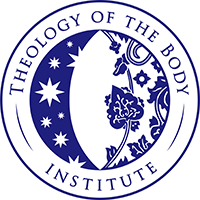
Mary’s Assumption and the Destiny of the Human Body
Mary’s Assumption and the Destiny of the Human Body
Aug. 15 is the feast of the ultimate destiny of the human body: the Feast of the Assumption of Mary, body and soul, into eternal bliss. Although it was not specifically defined as a dogma until 1950, belief in Mary’s bodily assumption has always been part of Christian faith.
Why 1950? God has his own reasons for the timing of such things. But even from a human perspective, the middle of the 20th century provided a perfect historical context for the Church’s declaration. As Father Donald Calloway writes: “During the twentieth century, the body … began to be seen by many people as a burden, something to be overcome and manipulated. … Thus began such procedures as sex changes, plastic surgery, and genetic manipulation. In a certain sense, it can be said that the twentieth century preoccupation with the body has led to a schizophrenic approach to … the body: either worship it as divine, or seek to manipulate it (or even kill it) through technological means” (The Virgin Mary and Theology of the Body, p. 45).
In the midst of such schizophrenia, Mary’s assumption proclaims the ultimate truth about the human body: it is destined to share in the eternal glory of the Trinity. Christ came bodily to redeem us bodily – and Mary’s bodily assumption is the proof that what Christ did on the cross worked. Mary is fully redeemed body and soul. In this sense, Mary is the hope of all humanity. She lives what we hope for.
The declaration of the Assumption in 1950 was also a powerful response to the devastation of World War II. The horror of Hitler’s concentration camps had only recently been exposed. Moreover, man had discovered how to split the atom – the basic building block of the physical universe – and had exploited this knowledge with terrifying consequences.
A Catholic doctor named Takashi Nagai survived the explosion that rocked Nagasaki on Aug. 9, 1945, killing nearly 80,000 of his countrymen. Writing of Dr. Nagai’s experience, author Robert Ellsberg observes in his book All Saints that “Nagai found it remarkable that as a result of heavy clouds obscuring the originally intended city, the bomb had been dropped that day on Nagasaki, an alternate target. As a further result of clouds, the pilot had not fixed his target on the Mitsubishi iron works, as intended, but instead on the Catholic Cathedral in the Urakami district of the city, home to the majority of Nagasaki’s Catholics. He noted that the end of the war came on August 15, feast of the Assumption of Mary, to whom the Cathedral was dedicated.”
At an open-air Mass just days after the bombing, Dr. Nagai said to the survivors, “We must ask if this convergence of events – the ending of the war and the celebration of her feast [Mary’s Assumption] – was merely coincidental or if there was here some mysterious providence of God” (All Saints, p. 13). We might say that in response to the A-bomb, in 1950 the Church dropped a G-bomb, a “grace-bomb” that truly is the hope of the world. “The woman,” representing us all, has been fully redeemed body and soul.
Three years later, Hugh Hefner founded Playboy Magazine. It makes a person wonder: Could the pornographic revolution of the second half of the twentieth century be some kind of diabolic response to the proclamation of the Assumption? It’s certainly curious that the modern pornographic degradation of women’s bodies began so soon after the most glorious elevation of the female body in history. The devil’s enmity has always been against “the woman” (see Gen 3, Rev 12). Christ lifts her up and the enemy attempts to pull her down.
Saint John Paul II observed that in “the face of the … debasement to which modern society frequently subjects the female body, the mystery of the assumption proclaims the supernatural destiny and dignity of every human body. … By looking at [Mary], the Christian learns to discover the value of his own body” (address, July 9, 1997). Mary, glorified in body and soul, show us who we are!
Question: What message can we recognize in the fact that the atomic bomb was dropped on a cathedral dedicated to the Assumption of Mary?
Photo: Icon of the Dormition of the Theotokos.



